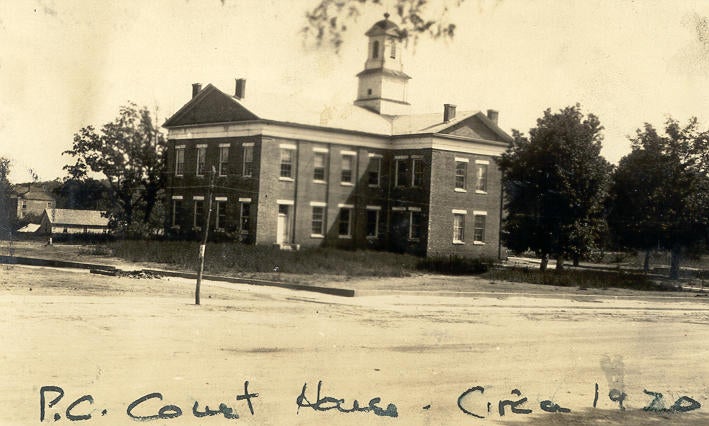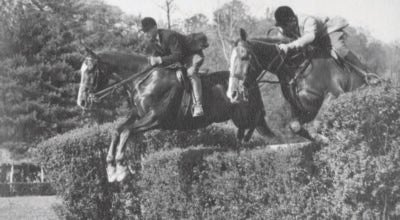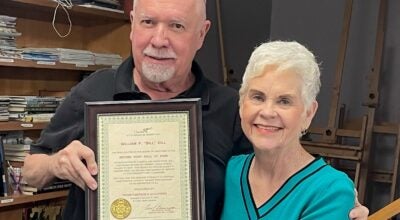History of the Polk County Courthouse
Published 8:00 am Wednesday, January 16, 2019

- This rarely seen image of the Polk County historic courthouse was taken in the early 1920s prior to the extensive renovations. John Vining recently presented a program on the history of the state’s eighth-oldest courthouse for the Polk County Historical Association. (Submitted photo)
Vining details 1859 courthouse in PCHA program
COLUMBUS — Polk County’s Courthouse, which opened in 1859, is the eighth-oldest courthouse in the state and one of only 14 antebellum courthouse structures left in North Carolina.
John Vining was the featured speaker at a Polk County Historical Association meeting last week, who shared the history of the courthouse.
Vining showed several slides, including some taken in the 1920s, when there were dirt sidewalks and when Mills Street was dirt.
Polk County is the only county west of Winston-Salem with an older courthouse.
Vining said by George and Glenn Peak laid out the town of Columbus, with the town laid out with the courthouse in the center of town and the four corners dedicated with churches. The Columbus Baptist and Presbyterian churches are still located in their original corners. Columbus First Baptist Church was constructed in 1857.
“The county seat was the only planned municipality in the county,” Vining said. “Tryon and Saluda sprung up by the railroad.”
John Hampton, John Nodine and Jonathan Newman donated 100 aces for the creation of Columbus, which was designated as the county’s seat.
Vining said the oldest-known photograph of the courthouse was taken in 1895. It shows the courthouse square surrounded by a fence, which was erected to help keep cattle and other livestock out of the courthouse lawn.
“In the beginning the courtroom was located on the first floor of the courthouse,” Vining said. “The entire second floor was vacant and set aside for future expansion needs. In 1874, the second floor was rented to a church for use.”
A discussion with the audience included the builder of the courthouse. According to Vining, the county was fortunate to have the contractors Ephraim Clayton and George Shackleford.
“Ephraim Clayton’s skills as a builder were exceptional,” Vining said.
Clayton built the buildings at Wofford College in Spartanburg, the addition to the St. John’s In The Wilderness in Flat Rock, Calvary Episcopal Church in Fletcher and many houses in western North Carolina, according to Vining.
Polk County’s courthouse is predominantly Greek Revival style. The brick on the courthouse is handmade and believed to have been made near the site of the courthouse. It is believed that John Bomar contracted to make all of the bricks for both the courthouse and jail.
Vining said the cost of the courthouse and jail was $16,836, with funds raised by selling the lots in Columbus.
“Around 1925, the courthouse had an extensive renovation,” Vining said. “The courtroom was moved to the second floor and offices were created on the first floor. Other improvements included a steam heating furnace, toilet facilities with sewer, oak flooring, electric lights and theater-styled seating in the courtroom.”
There was also general discussion about the features of the building, the 1858 bell and the historic use of multiple spittoon throughout the courthouse.





